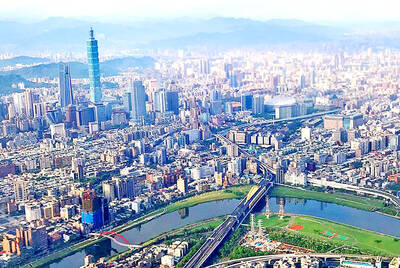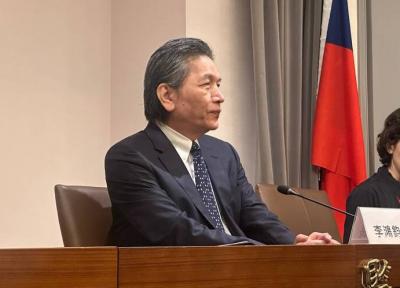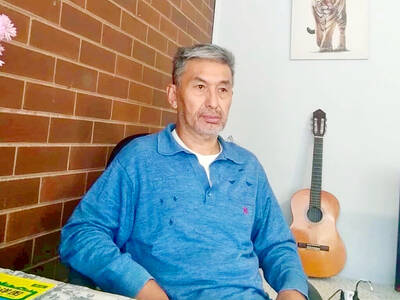Pilot fatigue and failure to maintain a safe flying altitude might have led to a helicopter crash that took the life of documentary film director Chi Po-lin (齊柏林) in June last year, an investigation by the Aviation Safety Council said yesterday.
The accident occurred on June 10 last year, when Chi and his assistant, Chen Kuan-chi (陳冠齊), boarded a helicopter operated by Emerald Pacific Airlines to scout sites for Chi’s new documentary Beyond Beauty: Taiwan from Above II (看見台灣II) in Hualien and Taitung.
The helicopter took off from Chihshang Township (池上) at 10:45am and crashed at 11:54am in a mountainous area near Changhung Bridge (長虹橋) in Fongbin Township, Taitung.
All three people on board — Chi, Chen and the pilot, Chang Chi-kuang (張志光) — died in the crash.
Council Executive Director Kuan Wen-lin (官文霖) said that the helicopter was not equipped with a flight recorder, so there was no way to tell how the pilot was managing or if there was any engine problem before the crash.
Investigators were unable to examine wreckage from the crash because most of it was destroyed in a fire, he said.
The council tried to determine reasons for the crash by interviewing airline staff, reviewing images recorded on Chi’s cameras and the results of the pilot’s drug test, visiting the crash site and conducting simulation tests, he said.
The council revealed what happened during the key 137 seconds leading to the crash, during which the helicopter flew over Cawi Community (靜浦部落), Changhung Bridge and Siejin Farm (協進農場).
Kuan said pilots operating under visual flight rules are supposed to keep the aircraft at an altitude of 152m when they are flying over mountainous areas.
Although the helicopter maintained an altitude of between 366m and 427m as it flew from Cawi Community to Changhung Bridge, it started to drop from 427m to 274m when it was heading from Changhung Bridge to Siejin Farm.
The helicopter was still flying at an altitude of 168m when it was 600m east of Siejin Farm, with the rate of descent being 274m per minute.
However, it continued to drop its altitude from that point on, with the rate of descent accelerating to 488m per minute, he said, adding that it was only 87m above the ground about 10.6 seconds before the camera stopped recording,
A normal rate of descent should be between 91m and 213m per minute, he said.
The time recorded on the camera showed that it took about 31 seconds for the helicopter to fly 600m east of Siejin Farm to the crash site, Kuan said.
Investigators also tried to determine if the pilot could have avoided the crash if he had quickly pulled up the collective lever, but they found that the maximum torque generated by the helicopter’s engine could only allow it to climb at a maximum rate of 396m per minute, meaning it was not enough to reverse the aircraft’s descent, making the crash inevitable, he said.
The investigation also ruled out possible influence from the subsiding air in the valley, as the weather data on the day of the accident showed that the flight was operating in an environment influenced by an upward air current, he said.
The airline had arranged two pilots to work on Chi’s project, with Chang scheduled for the assignment on June 9 and the second pilot on June 10, Kuan said, adding that each pilot was supposed to fly three assignments each day.
However, on the second day, Chi asked to replace the second pilot with Chang after the second pilot finished the first assignment, because he felt he worked well with Chang, Kuan said.
Even though Chang followed the eight-flight-hour rules by flying only 7 hours and 35 minutes in the 24 hours before the accident, he was burdened with a heavy workload as he was also the leader of the pilot team and was in charge of coordinating with the ground staff for other pilots, he said, adding that Chang might have been overworked.
Chang’s blood was also found to have contained 24 nanograms per millimeter (ng/ml) of chlorpheniramine, an antihistamine usually used to treat allergy-induced sneezing, common cold or the flu, Kuan said, adding that it is not a banned substance for flight personnel.
In general, a normal person would experience drowsiness and weak muscles if the blood contains only 17 ng/ml of chlorpheniramine, he said.
However, there was no evidence that chlorpheniramine had affected the pilot’s judgement, Kuan said.

Taipei has once again made it to the top 100 in Oxford Economics’ Global Cities Index 2025 report, moving up five places from last year to 60. The annual index, which was published last month, evaluated 1,000 of the most populated metropolises based on five indices — economics, human capital, quality of life, environment and governance. New York maintained its top spot this year, placing first in the economics index thanks to the strength of its vibrant financial industry and economic stability. Taipei ranked 263rd in economics, 44th in human capital, 15th in quality of life, 284th for environment and 75th in governance,

The Sports Administration yesterday demanded an apology from the national table tennis association for barring 17-year-old Yeh Yi-tian (葉伊恬) from competing in the upcoming World Table Tennis (WTT) United States Smash tournament in Las Vegas this July. The sports agency said in a statement that the Chinese Taipei Table Tennis Association (CTTTA) must explain to the public why it withdrew Yeh from the WTT tournament in Las Vegas. The sports agency said it contacted the association to express its disapproval of the decision-making process after receiving a complaint from Yeh’s coach, Chuang

Control Yuan Secretary-General Lee Chun-yi (李俊俋) tendered his resignation last night, admitting that he had misused a government vehicle, as reported by media. His resignation was immediately accepted by the Control Yuan. In a statement explaining why he had resigned, Lee apologized for using a Control Yuan vehicle to transport his dog to a pet grooming salon on May 20. The issue first came to light late last month, when TVBS News reported that Lee had instructed his driver to take the dog to the salon. The news channel broadcast photos that it said were taken by an unnamed whistle-blower, which purportedly showed the

A former officer in China’s People’s Liberation Army (PLA) who witnessed the aftermath of the 1989 Tiananmen Square massacre has warned that Taiwan could face a similar fate if China attempts to unify the country by force. Li Xiaoming (李曉明), who was deployed to Beijing as a junior officer during the crackdown, said Taiwanese people should study the massacre carefully, because it offers a glimpse of what Beijing is willing to do to suppress dissent. “What happened in Tiananmen Square could happen in Taiwan too,” Li told CNA in a May 22 interview, ahead of the massacre’s 36th anniversary. “If Taiwanese students or